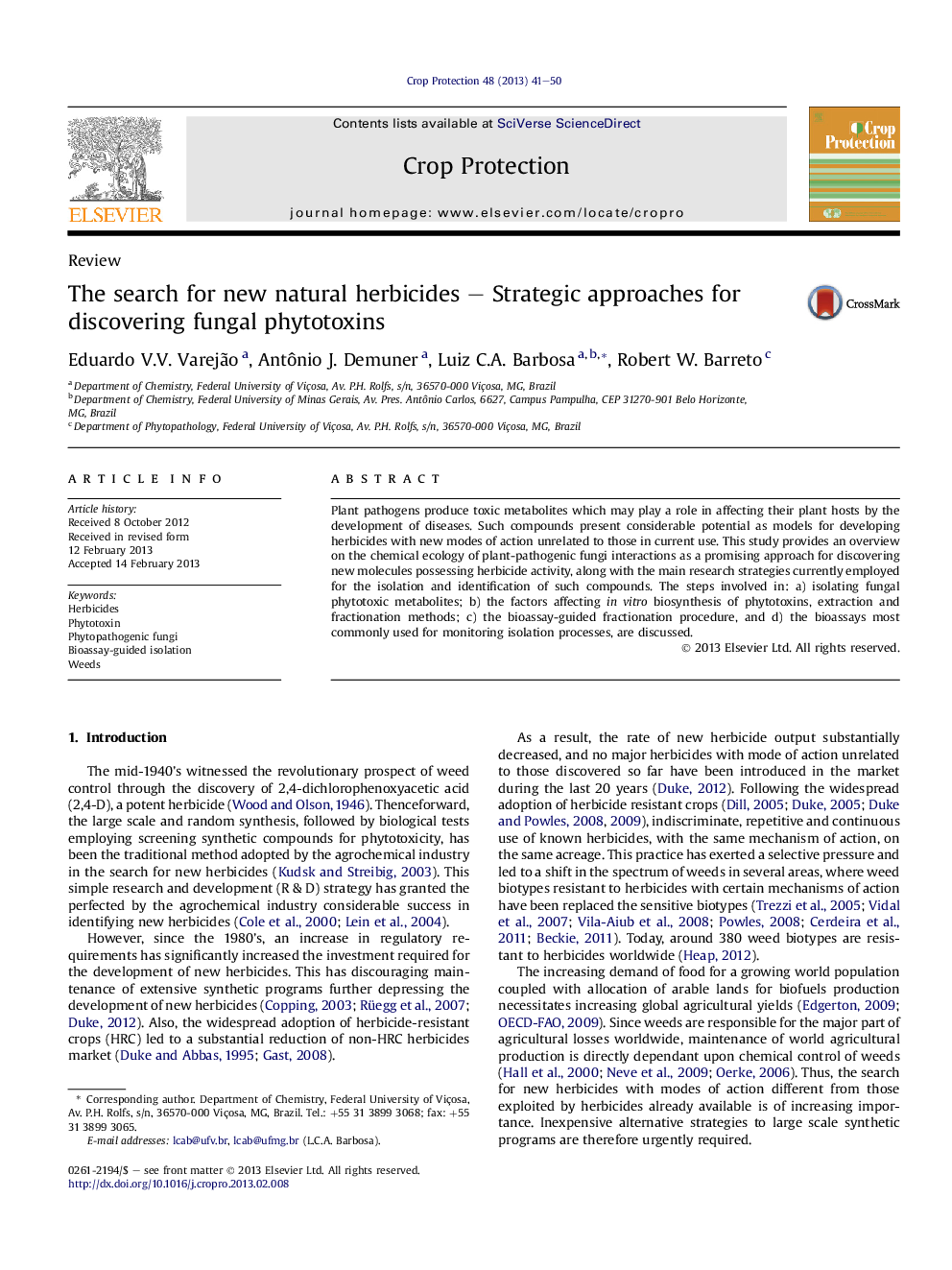| Article ID | Journal | Published Year | Pages | File Type |
|---|---|---|---|---|
| 4506264 | Crop Protection | 2013 | 10 Pages |
Plant pathogens produce toxic metabolites which may play a role in affecting their plant hosts by the development of diseases. Such compounds present considerable potential as models for developing herbicides with new modes of action unrelated to those in current use. This study provides an overview on the chemical ecology of plant-pathogenic fungi interactions as a promising approach for discovering new molecules possessing herbicide activity, along with the main research strategies currently employed for the isolation and identification of such compounds. The steps involved in: a) isolating fungal phytotoxic metabolites; b) the factors affecting in vitro biosynthesis of phytotoxins, extraction and fractionation methods; c) the bioassay-guided fractionation procedure, and d) the bioassays most commonly used for monitoring isolation processes, are discussed.
► Phytopathogenic fungi are promissing sources of new phytotoxic molecules. ► Fungal phytotoxins usually act by novel modes of action. ► Basic approaches for bioassay-guided isolation of fungal phytotoxins are presented. ► Overview on different strategies for the search of new phytotoxins from fungus. ► Factors which may influence the isolation of phytotoxins process are discussed.
